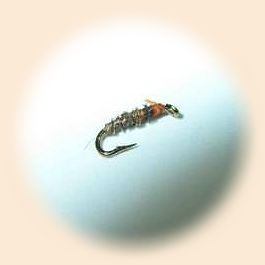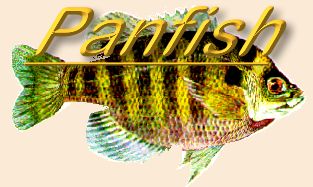|
It was Saturday morning and I was back at one of my favorite
ponds. Several folks have been to this pond to go fishing. I
was to meet the landowner today and help him catch a few bass
in the pond. He has not had much success doing that when he has
tried. He told me to come out on my own and he would meet me
sometime.
When I got to the pond I could se the fish rising all over the
place. The water would boil for a few seconds and then they
would go back down. But you could also see them swimming just
under the surface, as the water looked like it was shimmering.
I knew from previous experience that this would be a midge time.
I tie very simple flies to match these bugs. I tie from size 18
to 22 flies. Take a barb from the tail feather of a pheasant
or turkey and tie it on the hook with thread matching the color
of the feather.

Wrap the thread up the shank and then the feather. Tie it off
with a very small head. I think I like turkey feather barbs better
than pheasant for these flies. There are no wire or flash ribs or
wings or tails on these flies. Very simple to tie, but effective
flies.
I get everything loaded into the canoe, in near record time.
The fish are calling my name and I don't want to disappoint them.
I get out on the water and make the first cast with a size 22 fly
tied with golden pheasant tail feather barbs. This is the match for
the hatch that I have run onto before when I see fish feeding like
this. I have others available, but this is my starting point.
The fly has just gone under the surface when I have the first strike.
The right lasts about 10 seconds and then the fish is off. I pull the
line in to make sure that I have not lost the fly. It is still there.
I cast again and get another strike. I get this fish near the canoe
before it gets off. Just after the fish came to the surface the hook
came out. This is not going according to plan. The plan is that after
the fish is hooked, is to land it and put it in the fish basket.
This happens several more times before I get a fish into the net and
thus into the canoe. I do notice that after the fish is in the net and
thrashing around the hook comes out. The hook is on the back edge of
the fishes' lip. That might not be a secure place for a tiny hook with
almost no gap to get, with a fish that twists and turns as much a
bluegills do.
Since my success ratio is not to good it is time to rethink what is
going on. I am not being successful in keeping the fish under water
when they are hooked. It does not matter where I hold the tip of the
rod, they come to the surface and then they are gone. Since setting
the hook is not working it is time to do the opposite and see what
happens.
I will let the fish swim with the fly until the line is tight and
then try to land them. Hopefully the hook with set deeper in their
mouth and maybe it will hold better. Even if it does come out there
is a chance that it might re-set before it gets out of the fishes'
mouth. The other thing to do is to try a bigger fly with a larger gap.
I tie a size 18 fly on, made the same way. The fish are not interested
in this. I cast a size 22 to the same place the 18 went and I have a
fish on. Not that I get many more of them into the net. I even try a
size 20 and the fish are not interest. So it will be the size 22 and
trying other things to land the fish.
On my next cast I try my brilliantly deduce plan to land fish. No
body is there to dispute its brilliance. I let the fish move off
with the fly until the line tightens. I then try to retrieve the
line and land the fish. This is a little more successful, but I
still loose more fish than are landed.
I do know that the fly had to drop, no retrieve. The fish will not
take it if it is moving horizontally. The only thing I can think of
is that these little grubs were so abundant that the fish were taking
them and nothing else. I have no idea why they were so keyed in on the
color and size.
My thirst meter kicked in and told me that it was time to leave. The
landowner never did show up. I got everything loaded back on and into
the pickup and headed home. I do have water in the pickup but I don't
take it in the canoe. When I get thirsty it is time to head home.
When I got home and started filleting the fish, I took time to open
up their stomachs. What I found was a little grub, tan in color about
0.5 mm in diameter and about 2mm long. Every fish had its stomach
distended with these grubs. I did not notice anything else in their
stomachs.
I don't think my landing percentage was in double figures, but I
ended up with 32 bluegills when I got home. Than means I hooked
a large number that are still in the pond to grown larger.
Hope you can get out on the water and maybe have some brilliant thoughts as I did.
If you are alone who is there to dispute it?
Rick
~ Rick
|



